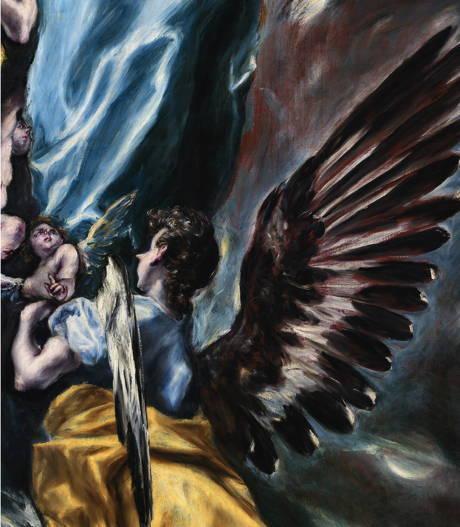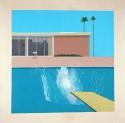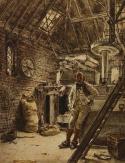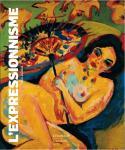Art Of The Day Weekly
#479 - from 29 June 2017 to 5 July 2017

El Greco, Immaculate Conception from the Oballe chapel, 1608-1613, detail (angel), Museo de Santa Cruz, Toledo, Spain © Parroquia de San Nicolás, Toledo © David Blázquez.
IN THE AIR
El Greco teaches us how to look
SÈTE - Claudel used to say, “The eye listens”. At the time, the eye was indeed trained, fortified by a shortage of things to see, by frugality. The only show it had to observe was the one offered directly by the world. Things have changed, and today our miserable ocular appendix is submerged by images, fixed images but mostly mobile ones, often differed or virtual. This may sound awkward, but we could say the eye does not know where to turn to. The show has become commonplace of visitors over equipped with electronic instruments, running through museums, snapping shots of all the paintings and the explanations next to them. No one would think of looking, no time! They’ll select the photos later on, after downloading them on the various social networks. Based on the fact that we all still know how to see but rarely do we look, the Musée Paul Valéry offers visitors an interesting experience. They set up a big altarpiece by El Greco, originally from the former Oballe chapel in Toledo, in what today is the Museo de Santa Cruz. They also placed a multitude of immaculate sofas at the foot of the altarpiece. The aim of the game is to sit there and look up. One must distinguish the Virgin in her assumption, the musician angels with huge wings, the colors – acid rose and blues - the profile of Toledo, a mirror, a well, the moon, and the dove of the Holy Spirit. One can let it go at that. Or after being completely content, go on to the next booths where the iconography, the circumstances of the creation, the rediscovery of El Greco, and his influence on modern painters such as Picasso, Kokoschka, and others. Gide used to say that art was born from constraints and died from freedom. We could say the same thing about our way of looking, which has gone too far in its independence. The time has come to call it back to order, and to punish it somewhat. It is only for its own good: in this era where the body is worshiped, the eye also deserves to build up its muscle.
• El Greco, l’Immaculée Conception de la chapelle Oballe at the Musée Paul Valéry, from 24 June to 1 October 2017.
EXHIBITIONS

David Hockney, A Bigger Splash, 1967, acrylic on canvas, 242.50 x 243.90 x 3 cm © David Hockney Collection Tate, London
Hockney, the permanent experiment
PARIS – There is one artist who has greatly questioned our way of looking; that is David Hockney. This led him for example to recreate thecamera oscura which old masters worked with. Hockney himself is the victim of our collective retinal persistence: he will forever be the salesman of California pools. His famous Bigger Splash is indeed there, an eruption of spray in a cloudless blue, facing a shaky diving board. But Hockney painted that work in 1967, half a century ago, and the eighty year old has used many other paths to question our way of representing reality. There are his early abstract compositions and collages, among them a beautiful self-portrait, as well as works created with a copying machine, a fax, video or an iPad; there are also small formats and huge landscapes (Bigger Trees, a 12 meter long assembly of 50 paintings). In his most recent paintings Hockney questions our comfortable Euclidean perspective and offers an “inverted” version.
• David Hockney, une rétrospective at the Centre Pompidou, from 21 June to 23 October 2017.
Hunt, an era of England that has vanished
LONDON – He had a passion for the countryside, and was nicknamed “Bird’s Nest”. William Henry Hunt (1790-1864) was almost a contemporary of Constable and Turner, and he left an ideal portrait of the countryside of Victorian England, with its gentlemen-farmers and its rural trades by use of watercolors, which he mastered like a true virtuoso. The exhibition offers a small selection, until we see a complete retrospective of his abundant production.
• William Henry Hunt: Country People at the Courtauld Gallery, from 24 June to 17 September 2017.
The grandeur of Venice
MADRID - Venice is still a star! And Titian, Veronese, and Tintoretto form the unbeatable trio that always make the city of the Doges succeed. This new presentation of the great masters, joined by Bellini, Giorgione, Lotto, and the Bassano family, explores the themes of the landscape and of feminine portraits. In order to give a more exciting touch to this presentation of masterpieces, the dramatic sounding subtitle – Birth of Beauty and Destruction of Painting – does not refer to some low vandals but rather the dissolution of the touch that preceded the Impressionists.
• Renacimiento en Venecia at the museo Thyssen-Bornemisza, from 20 June to 24 September 2017.
Maria Theresa, an esthete
VIENNA – Maria Theresa, born 300 years ago, was an enlightened empress and the mother of Marie-Antoinette. Part of the celebrations of this anniversary, this exhibition reminds us of her esthetic tastes that were a lot more progressive than her conservative politics. In 1777, she made the palace of the Belvedere, where she has set up the royal collection, accessible to all. She favored portraits and developed a great interest in porcelain and sculpture, to the point of having Moll make one for her tomb in the Imperial Crypt. This is the perfect opportunity to rediscover a great number of talented artists of the time, who did not pass on to posterity, from Karl Josef Aigen to Franz Anton Zauner.
• Maria Theresa and the Arts at the Belvedere, from 30 June to 5 November 2017.
BOOKS
An X-ray of expressionism
Among the long list of “isms”, expressionism holds a large place. But what does it refer to, exactly? As expressed in this remarkable book -which hurts our wrists as we hold it too long-, there was a time when Matisse and the fauvist artists were put together under the label of French expressionism. Today though the term is almost monopolized by the Austro-German matrix, to which was added, after the Second World War, abstract American expressionism with Pollock, of which the author evaluates the degree of kinship. It is those landscapes in bright, jarring colors, -blue horses after all! –, those portraits circled with wide black lines, the general atmosphere of primitive freedom. The two founding moments are replaced in their European context: Die Brücke (born in 1905 in Dresden, instigated by Kirchner and three friends, but named this way only after its demise in 1914) and Der Blaue Reiter (founded in 1911 in Munich with Kandinsky and Marc as spearheads). Expressionism could have petered out calmly in a calm European continent, but it would regenerate itself at two monstrous sources: war and the metropolis. Another channel would result from it. A ferocious, bloody, and tragic channel: the one of Grosz, Meidner, Dix, Beckmann, that the Nazis would quickly catalogue as being “degenerate” but which would settle more solidly the posterity of the movement in the history of art.
• L’Expressionnisme, by Itzhak Goldberg, Citadelles & Mazenod, 2017, 400 p., €189.
OPENINGS OF THE WEEK

CAROLYN CARLSON - Writings on Paper
1 July 2017 - ROUBAIX - La Piscine
Another talent of the famous choreographer: her drawings on paper


